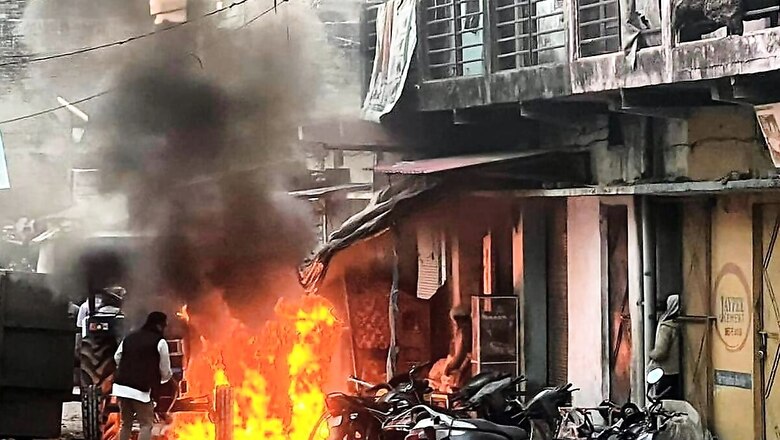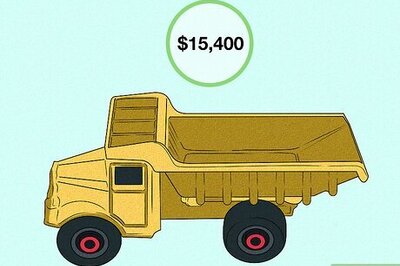
views
The Uttarakhand government is set to table a bill in the assembly that will make rioters accountable for the damage they cause to the public property. The move comes after the anti-encroachment drive in Banphoolpura in Haldwani led to violence in the locality in which some people were killed.
The bill, Uttarakhand Public and Private Property Damage Recovery Bill, is similar to the bill passed by the Yogi Adityanath government in Uttar Pradesh in 2020 and the Haryana government in 2021. Uttarakhand will be the third state to enact such a law.
Last month, the government had passed the Uniform Civil Code that allows a common law for marriage, divorce, adoption and inheritance of property.
The bill will ensure that the cost of damage to the public property during the protest or strike is recovered from the perpetrators of the crime.
If the bill becomes the law, a tribunal will also be created under the chairmanship of retired district judge, which will then decide compensation for the loss of properties.
According to a report by The Times of India, chief minister Pushkar Singh Dhami is “extremely serious” on “swift passage of the bill”. “We have previously enacted strict laws to prevent cheating in competitive exams. Similarly, this legislation will have stringent provisions. Further details (of the proposed law) will be provided once the draft is finalised”, as quoted by The Times of India.
What Happened in Haldwani?
Violence erupted in Haldwani on the evening of February 8 when civic authorities razed two illegal structures – Masjid Mariam mosque and Abdul Razza Zakaria madrassa – built on the state government’s ‘nazul’ land.
Residents of Banbhulpura pelted stones at the demolition team and the police personnel and allegedly set the Banbhulpura police station and several vehicles afire.
The violence left five dead and nearly 150 injured. Shoot-at-sight order was issued and a curfew was imposed in the town.
The Nainital Police had registered a total of three FIRs for the attack at the police station, violence during the anti-encroachment drive and vandalising vehicles. The FIRs were registered under sections 147 (rioting), 148 (rioting armed with deadly weapon), 307 (attempt to murder), 332 (voluntarily causing hurt to public servant), 353, 333, 427 and more of the IPC and sections of the Prevention of Damage to Public Property Act.
Eighty-one people, including key accused, Abdul Malik, have been arrested so far in the Haldwani clashes.
How Similar is Uttar Pradesh and Haryana’s Anti-Riot Acts?
The Uttar Pradesh Recovery of Damages to Public and Private Property Ordinance, 2020 aims at dealing with violence, controlling its escalation, providing for recovery of damage to public or private property during hartals, bandhs, riots and protests. It also seeks to create tribunals to investigate the damages, as per the government document.
After the anti-CAA (Citizenship Amendment Act) protests in Lucknow, the government began the recovery exercise to collect the damages to the property during the violence.
The Haryana government passed the Haryana Recovery of Damages to Property in 2021 that provides for recovery of damages to properties caused by people during disturbance to public order by an assembly, lawful or unlawful disorder.
The Haryana Bill defines “damages” as “loss, injury or deterioration caused by any act or ommission by any person to property of central government or state government or another person during disturbance to public order”.
“Property” includes “immovable and moveable properties of all kinds including vehicles, livestock, jewellery, goods and such like properties whose minimum value is one thousand rupees”.
It also provides for the setting up of a Claims Tribunal to assess the damage done to the property and determine the compensation. The bill gives the collector the power to issue an order for attachment of the property or bank account of any person against whom an award has been passed by the Claims Tribunal to pay the compensation.
The Bill provides that such property or bank account shall remain attached till the person makes the payment.
Any person aggrieved by the award passed by the Claims Tribunal may file an appeal before the High Court of Punjab and Haryana. No appeal, however, shall be entertained unless 20% of the compensation awarded by the Tribunal is deposited with the DM.

















Comments
0 comment